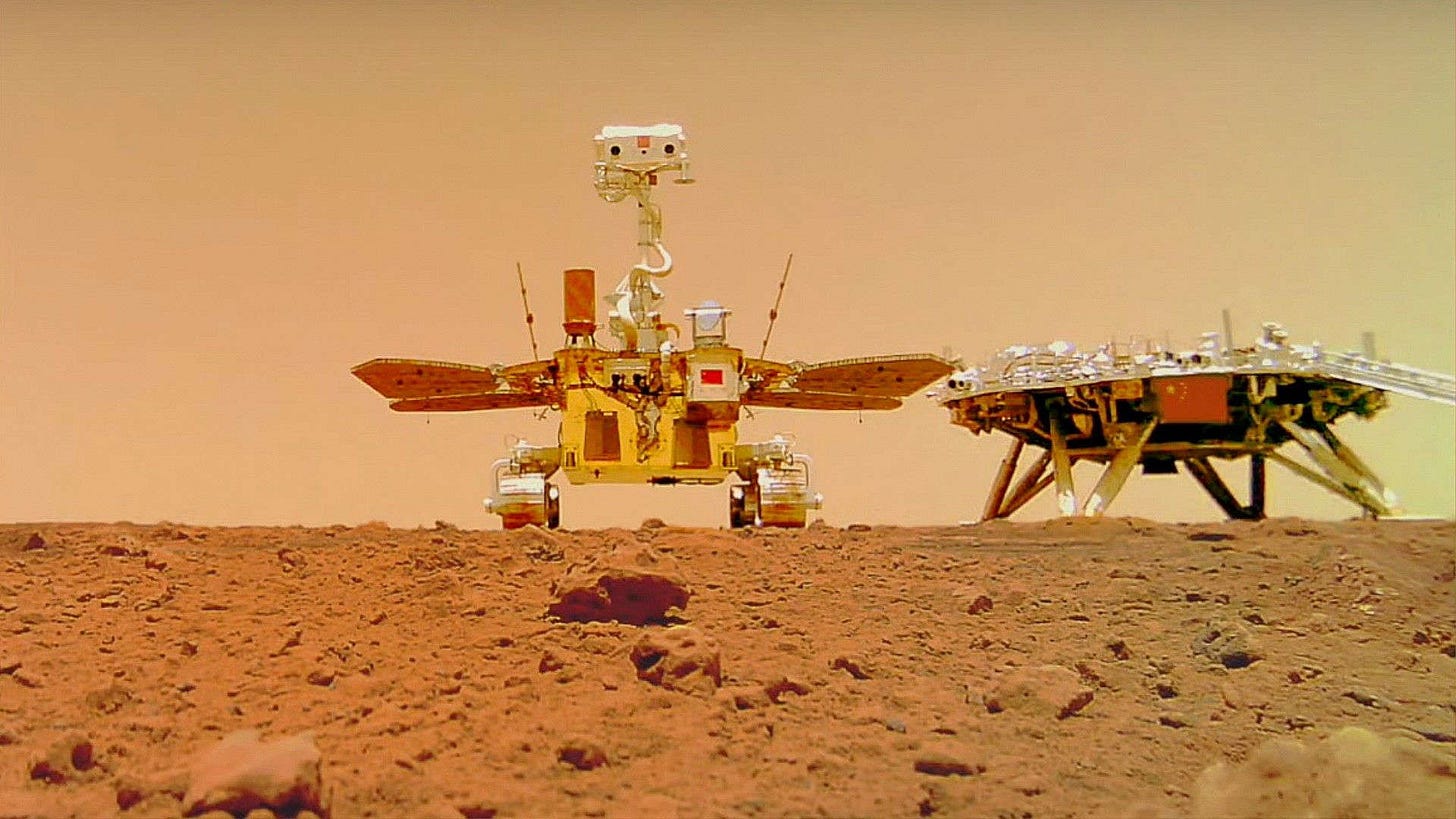China's Zhurong rover reveals complex layers beneath the surface of Mars!
Data returned by Zhurong's ground-penetrating radar instrument reveals evidence of craters buried just under the surface of Mars and other, sloping features with less certain origins, according to a new paper.
This view of the Martian surface, which shows seve…



